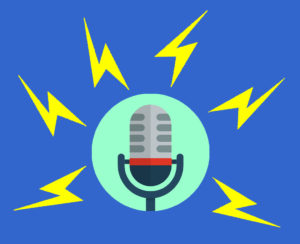
It takes a little bit of history to understand why the use of audio is not yet widespread on the web. Digital audio came into existence as a publishing medium in the early 1990s when multimedia CDs became popular. You could combine text, color graphics, audio, embedded programming, and even video. The problem was that there wasn’t much of a market for multimedia CDs. They were limited to sales in certain retail outlets and never really caught on big time. The reason CDs never caught on is that soon after it was feasible to publish via multimedia CDs, the commercial internet and the World Wide Web materialized, and everyone forgot about CDs.
The dearth of easy-to-use authoring programs initially made digital multimedia publications difficult to create. It took a programmer (more realistically a team of programmers) to transform an author’s creativity into the digital format.
When the web superseded CDs as a publishing medium, the web capabilities were somewhat crude. But as crude as the web capabilities were, when you were on the web, you were published, a situation CDs could not match. And you didn’t have to be a programmer to master the markups to create a webpage. Thus, CDs never had a chance to become a true mass medium for publishing as they were for music. Yet the web for all its attractive capability was a very underdeveloped digital medium at first.
RealAudio introduced audio to the Web in 1995. It was a revelation to be able to include sound in a webpage that otherwise had just text and graphics. Nonetheless, sound had its shortcomings. It required a lot of bandwidth at a time when people had little bandwidth. It also required more programming skill than the average webworker had acquired in those days (or even today). And it required a RealAudio plugin. That was the story of sound on the web, an underused medium until HTML version 5.
HTML5, finally approved in late 2014, makes it very simple to include streaming sound in a webpage, and anyone who can do HTML coding (which is just about anyone with an IQ over 40) can now embed sound in a webpage using a standard MP3 audio file. In the 20+ year history of the commercial web, sound has never really come into its own as a common web medium, even as video (a more complex medium) has become quite popular. But with the advent of HTML5, audio will blossom as a web medium.
That’s right! Today audio is easy to use in webpages. Learn to enhance your webbook with the spoken voice and read my webbook Publishing by Voice (https://PublishingByVoice.com). That happens to be the same webbook that this book uses as an example of a webbook. But audio and webpages, of course, are not limited to the spoken voice. Anything a person can hear, you can record and put in a webpage. Or better yet, you may be able to find freeware audio on the internet or even a royalty-free audio that you can purchase. Audio is an exciting new element for digital publications that will become commonplace in the future.
The HTML markup you use is simple:
<audio> </audio>
The audio markup has four attributes that dictates how it operates.
When all is said and done, you don’t have to commit yourself to massive amount of audio to include in your webbook. Just try a little bit and hear how it works out. As you are emboldened by your successes, add more audio to your webbook. Remember, unlike other books both digital and printed, a webbook is an everyday work in progress; you can always add something.
Until you read Publishing by Voice, keep in mind a few current realities about incorporating voice into your webpages. The recording equipment today is less expensive, more capable, more convenient, and easier to use than ever. You will need audio editing software too. Some is freeware, and some is for sale. But audio editing software is easier to use than ever. Hence, recording and using voice to enhance your webpages is a project well within your capability.